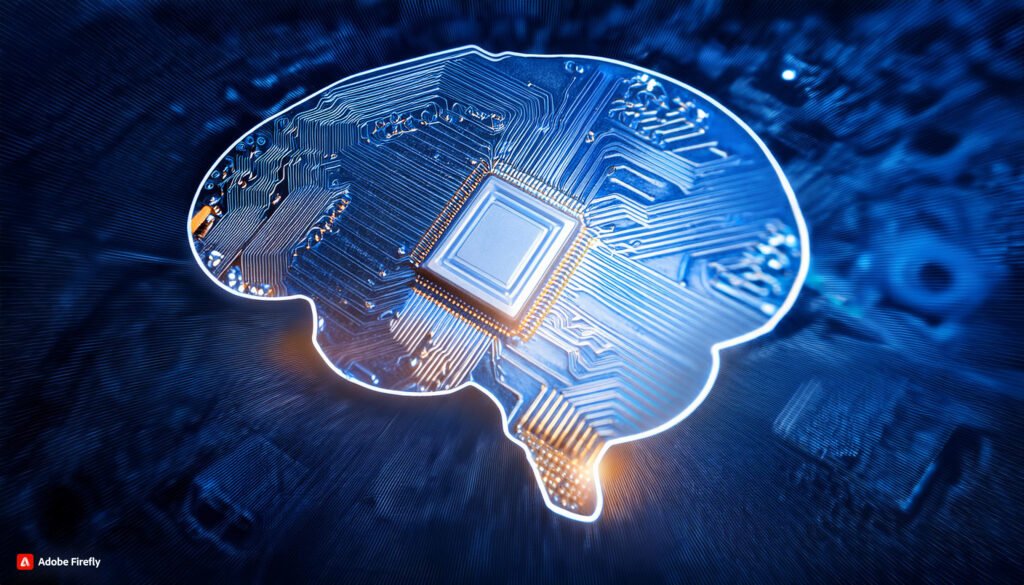Introduction
Artificial intelligence is reshaping the world with autonomous vehicles, recommendations, and advanced medical diagnostics. Yet, at the very bottom of these wonders, there is nothing else but a complicated dance between the algorithms and data. In the present discussion, the rules of following and meanings as applied by Ludwig Wittgenstein—with deeper insight into the very nature of rule-following capabilities—are implemented to move closer to describing AI robotic systems. Wittgenstein is one of the key personalities in 20th-century philosophy who discusses very deeply the comprehension of the application and interpretation of the rules. This paper now goes further and discusses Wittgenstein proceeds to operate at the level of philosophy of AI and gives some considerations about machine rule-following, both of a philosophical and practical nature.
Wittgenstein’s Theory of Rule-Following
The later philosophy of Ludwig Wittgenstein, and particularly his seminal work Philosophical Investigations, brings a new turn regarding meaning and compliance with rules. According to Wittgenstein, compliance with a rule is not an event of mechanical application; on the contrary, it is essentially complicated playfulness of social practices and communal agreement
Rules as Social Practices
To Wittgenstein, a rule does not get meaning from a definition, be it abstract or otherwise; it projects meaning in its usage within a setting that is at once social. The notion of following a rule implies participating in the communal practice whereby the rule continuously gets reinterpreted and reapplied. In this view, rules are not, as traditionally conceived, static entities applied uniformly.
Consider the rule “be polite.” Although simple to state, it applies extremely variably according to cultural norms, social situations, and personal relationships. As such, Wittgenstein would want to argue that to understand and apply the rule properly means doing a lot more than listing a set of behaviors; it involves participating in a common social practice wherein interaction constantly shapes what meanings politeness will have and a community of continuing expectations.
The Challenge of Interpretation
On the other, one of the basic insights Wittgenstein made was that rules were of their nature flexible and context-dependent. He brings in “rule-following paradox,” pointing out that it is impossible to define how to apply a rule without appealing to further rules. One would think from such a paradox that the notion of understanding a rule exemplifies a form of interpretative practice as against any process of a mechanical kind.

AI and Rule-Following: A Mechanical Perspective
Artificial Intelligence does not work like human rule-following at all. AI systems, and especially those working by machine learning, are rule followers based on data and algorithms rather than social practice. Against Wittgenstein’s notion of rule-following as a socially embedded practice stands the stark contrast of this mechanical view.
Machine Learning and Algorithmic Rules
Machine learning algorithms learn to follow rules through large data sets. For instance, in case you would like a neural network to recognize pictures of cats, it would do so by learning the patterns in pixel data and not by actually understanding what a “cat” is. Using this approach, AI performs quite well on tasks like image recognition or text generation, which do not relate to deeper contextual understanding as in human rule-following.
Rules, for machines that learn, are encoded in algorithms and adjusted based on statistical learning. The level to which an AI “understands” these rules is as good as the patterns and correlations detected in the training data. This rule-following methodology is precise and effective but lacks exactly the sort of interpretive flexibility that Wittgenstein points to.
Example: AI in Financial Trading
AI systems used in financial trading algorithms provide a very nice example of mechanical rule-following. The algorithms are supposed to evaluate the market data for making trades based on predefined rules and patterns. While they can often return very accurate predictions and complete trades at extremely high speeds, they do this on the basis of data-driven algorithms rather than through an understanding of market dynamics or economic theories. Although quite effective in rule-following, this is very different from the human decision-making processes inclusive of broader economic contexts and trends.

The Role of Context in Rule-Following
Most specifically, Wittgenstein’s emphasis on context reveals a limitation of current AI systems. In human rule-following, rules are interpreted within the broader social and cultural context. It is through this interpretive flexibility that humans manage to adapt rules into new and complex situations.
Contextual Adaptation
Human rule-following is considerably context-bound. For example, the rule to “dress appropriately” means very different things depending on culture, social setting, and personal relationships. According to Wittgenstein, applying a rule such as the one above requires sensitivity to the surrounding context—possibly more than what the rule says—an ability to apply the rules appropriately.
This dimension of contextual understanding is missing in most AI systems. Even when they are trainably_BASED on patterns and decisively action-based on data, they may not understand the fine lines of context within which rules are applied. This limitation could throw up challenges in situations that demand contextual sensitivity.
Example: AI in Customer Service
AI-powered chatbots and virtual assistants are a very good example of difficulties in context adaption. While such systems can process a variety of queries and send back responses in terms of some predefined rules, they usually fail in the face of really complex and context-sensitive interactions. For instance, the chatbot may respond inappropriately if it does not identify the emotional tone or nuanced context of a customer’s query. This limitation in turn also shows the space between AI’s capabilities in terms of following the rules and the contextual flexibility inherent in human interactions.

Private Language and AI Understanding
Wittgenstein’s case against a private language would especially be relevant with regard to the consideration of the capacity for understanding on the part of AI. Wittgenstein’s argument was that language and meaning are essentially social and cannot make sense without social practices.
AI’s Lack of Subjective Experience
AI systems, being algorithmic and data-driven, are devoid of personal or subjective experience. They do not enjoy a “private language” or personal understanding. It is rather a question of processing patterns within the data that goes to its making and not some personal understanding.
For instance, though AI devices could, at some extreme end, write coherent text or even hold conversations, they do so in accordance with learned patterns—not a person’s life experiences or internal dialogue. That is, AI’s replies are not really an understanding of meaning but a statistical analysis of responses.
Example: Language Models and Human Interaction
Models such as GPT-3 demonstrate AI’s real capability to produce text indistinguishable from that written by a human. This, however, is based on huge amounts of training data, not upon personal understanding. These models generate text by predicting the most likely next word in a sequence, not from experience or appreciation of context. This limitation underlines what so many people fail to realize—that there is a difference between rule-following AI and human comprehension.

Ethical and Practical Implications
The philosophical debate regarding rule-following capabilities in AI encompasses several ethical and practical concerns. As AI systems become integrated into so many sectors of society, their limitations and implications need to be understood for responsible development and deployment.
Ethical Considerations
AI understanding limitations raise ethical concerns to a great extent. For example, care in consideration of capability and possible biases of AI systems is needed in fields like health, law, and social services. AI systems must be transparent, accountable, and aligned with human values.
This also includes ethical considerations that deal with the possible biases in data and algorithms. AI systems can perpetuate and increase existing biases if not handled properly. Fairness and equity in the use of AI, in that respect, become very important in avoiding possible harmful results.
Practical Considerations
On the practical front, understanding the limitations of AI as a rule-following creature should guide the design and implementation of AI systems. This requires that researchers and developers place an emphasis on enhancing the contextual understanding and interpretive capabilities of AI so that it can be useful in real-life applications.
This could also be applied in understanding how humans and machines comprehend differently and how AI can be integrated into various sectors. This may ensure that AI is used to complement human capabilities and judgment, rather than substitute for it, so the application will bring about effectiveness and ethical usage of technology.

Conclusion
The rule-following theories brought forward by Ludwig Wittgenstein shed significant light on the nature of artificial intelligence. While AI systems can follow rules in a very efficient manner by performing tasks according to algorithms and data, their comprehension takes a different turn from human understanding. Wittgenstein’s view, therefore, highlights the constraining factors in AI’s ability to follow rules and emphasizes contextual and ethical considerations in its development.
In a fast-changing AI environment, consideration of philosophical perspectives like those of Wittgenstein may be of much value in being able to understand the potential and even the limits of this technology. One needs to be very clear about the difference between machine and human understanding in order to find one’s way through the complex landscape of artificial intelligence and what that means for society.

- Exploring C AI: The Next Frontier in Chatting with AI Characters - August 29, 2024
- How to Use Artificial Intelligence: A Practical Guide - August 28, 2024
- Revolutionizing Economics: How AI is Shaping the Future of Financial Analysis and Policy - August 27, 2024

